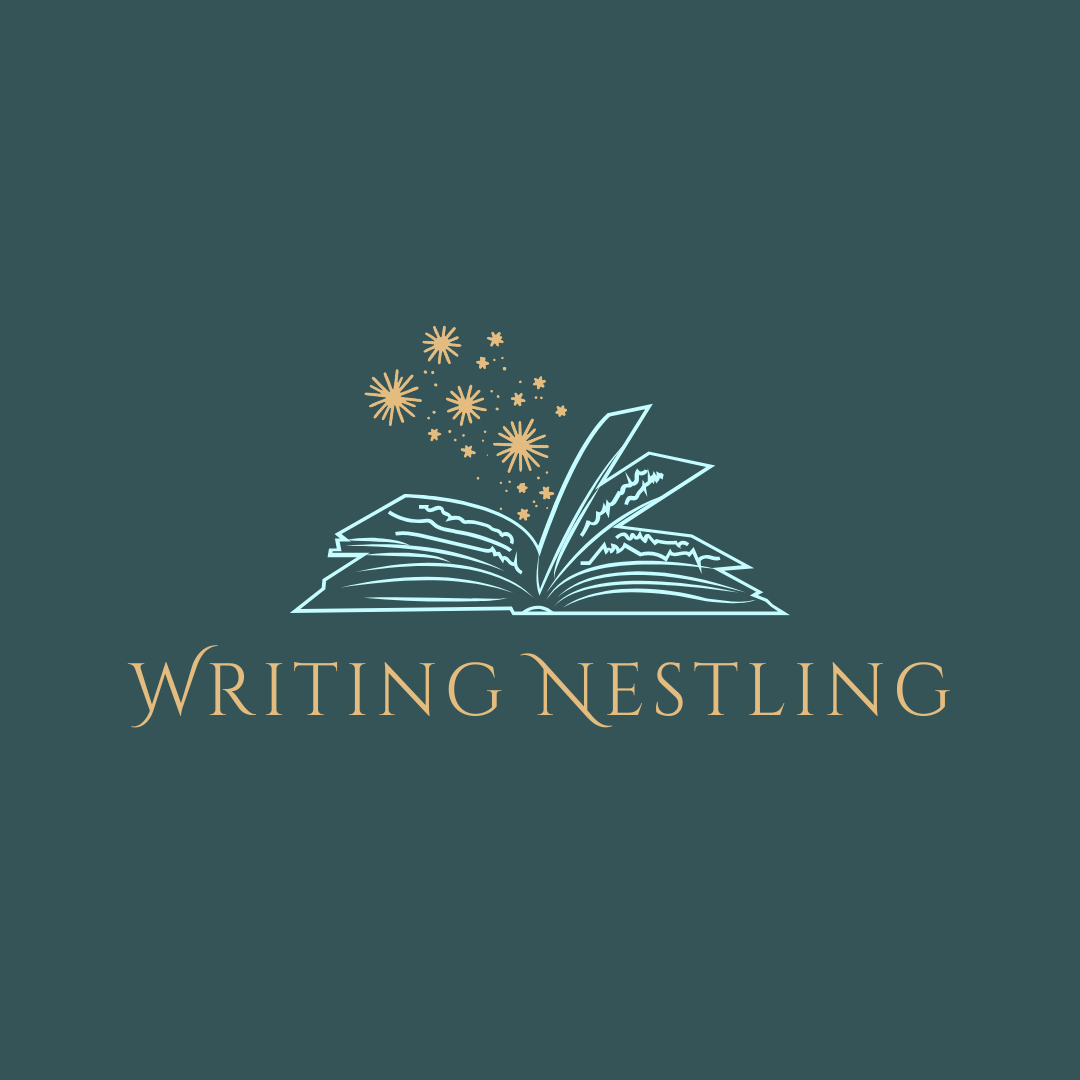How to Write a Historical Fiction Short Story-2024
How to Write a Historical Fiction Short Story
How to Write a Historical Fiction Short Story: Embarking on the journey of writing a historical fiction short story is akin to stepping into a portal that transcends the boundaries of time, inviting both writer and reader to traverse the corridors of history.
In this intricate dance between fact and imagination, the storyteller becomes an alchemist, blending the rigors of historical accuracy with the vibrant hues of creative storytelling.
Crafting a narrative that breathes life into the past requires not only a meticulous understanding of historical events but also a flair for weaving those facts into a tapestry of engaging characters and compelling plotlines.
This literary endeavor demands the precision of a historian, the artistry of a wordsmith, and the imagination of a storyteller, all converging to transport readers to eras long past.
As we embark on unraveling the art of crafting a historical fiction short story, we delve into the nuances of research, character development, and the delicate balance between historical truths and narrative allure.
Welcome to the realm where the echoes of history become the backdrop for captivating tales—a realm where every word is a step into the past and every page an invitation to explore the timeless mysteries of human experience.
How to Write a Historical Fiction Short Story
Here is a step-by-step process on How to Write a Historical Fiction Short Story:
Choose a Time and Place
Select a specific historical period and location for your story. Research the cultural, social, and political aspects of that time to create an authentic setting.
Research Extensively
Dive deep into historical records, books, and reliable sources to gather accurate details about the chosen time period. Pay attention to everyday life, customs, clothing, and language.
Develop Compelling Characters
Create characters that fit into the historical context. Consider their backgrounds, beliefs, and motivations in relation to the era. Make them relatable and authentic.
Establish a Strong Plot
Craft a compelling storyline that incorporates historical events or elements. Weave your characters into the historical fabric, allowing them to interact with significant occurrences of the time.
Balance Fact and Fiction
While historical accuracy is crucial, remember that you are writing fiction. Find a balance between real events and your creative interpretation to keep the story engaging.
Create a Vivid Setting
Use descriptive language to transport readers to the historical setting. Capture the sights, sounds, and smells of the time period to enhance the immersive experience.
Incorporate Authentic Dialogue
Research the language and speech patterns of the chosen era. Avoid anachronisms and strive for dialogue that reflects the historical context while remaining accessible to modern readers.
Build Tension and Conflict
Introduce conflicts that arise from both the historical backdrop and the relationships between characters. Engage readers with challenges that resonate with the time period.
Show Cultural Nuances
Explore the social norms, traditions, and taboos of the historical setting. Highlight cultural nuances to add depth and authenticity to your narrative.
Revise and Edit
Once the initial draft is complete, review and revise your story. Ensure consistency in historical details, refine character development, and polish the prose for a smooth and captivating read.
Seek Feedback
Share your work with others, especially those familiar with the historical period you’ve chosen. Constructive feedback can help you refine your story and improve its historical accuracy.
Finalize and Publish
After incorporating feedback and making necessary revisions, finalize your historical fiction short story. Consider submitting it to literary magazines, anthologies, or self-publishing platforms.
Remember, these steps are a general guide, and individual approaches may vary. The key is to balance historical accuracy with engaging storytelling to create a memorable historical fiction short story.

Research Phase
Embarking on the Research Phase is akin to donning the mantle of a historical detective, delving into the labyrinth of time to unearth the forgotten treasures that will breathe life into your narrative.
It’s not merely about choosing a historical period; it’s about forging a connection with the echoes of the past that resonate with your creative spirit.
As you immerse yourself in primary sources, dust off the tomes of forgotten tales, and decipher the cryptic whispers of bygone eras, you become a time traveler on a quest for authenticity.
The Research Phase is not a mere checklist; it’s a sacred pilgrimage to the archives, an odyssey where the golden threads of history intertwine with the vibrant yarn of imagination, weaving a tapestry that will transport readers across epochs.
So, embrace the historian’s quill and the storyteller’s compass, for in the Research Phase, you chart the course of your historical fiction short story through the hallowed annals of time.
Selecting a Historical Period
Selecting a historical period is akin to choosing a portal to the past that aligns with the beating heart of your narrative. It’s a delicate dance between personal fascination and strategic allure for your target audience.
Whether you find yourself drawn to the opulent courts of medieval Europe, the tumultuous epochs of revolutionary change, or the enigmatic eras that shaped civilizations, the historical period becomes the canvas upon which your story unfolds.
It’s not just about historical accuracy; it’s about the resonance of the chosen epoch with your own passions and the pulse of your readers.
In this crucial decision, you become an architect of time, constructing a bridge between the contemporary world and the shadows of history.
So, let curiosity be your guide and choose a historical period that not only captivates your imagination but invites readers to embark on an unforgettable journey through the corridors of time.
In-depth Historical Research
In-depth historical research is the crucible where the alchemy of storytelling meets the rigors of authenticity. It’s not a mere exploration of dates and events; it’s a meticulous excavation into the layers of the past, a pursuit of nuance that breathes life into the skeletal framework of history.
As a writer, this phase demands a relentless pursuit of truth, diving into primary sources with the fervor of an archeologist unearthing relics from antiquity.
It involves deciphering faded manuscripts, scrutinizing diaries, and navigating the labyrinth of historical archives to extract the essence of a bygone era.
In-depth historical research is a commitment to understanding not just the grand tapestry of major events but also the subtleties of everyday life, societal norms, and the cadence of language.
It transforms a writer into a time-traveling scholar, armed not only with facts but with the intangible spirit of an era, poised to infuse authenticity into the very soul of a historical fiction short story.
Developing the Plot
Crafting the plot of a historical fiction short story is akin to orchestrating a symphony that echoes through the corridors of time. It’s not just about stringing together events; it’s about infusing life into the historical skeleton with the pulse of imagination.
Like a master weaver, you blend the threads of factual accuracy with the vibrant hues of creative liberty, creating a narrative tapestry that captivates and resonates.
In this alchemical process, historical events become the canvas, and fictional elements emerge as brushstrokes, painting a vivid panorama that transcends the boundaries of time.
As you sculpt characters against the backdrop of history, the plot becomes a living entity, a dynamic interplay between the rigidity of facts and the fluidity of storytelling, leaving readers on the edge of their seats, eager to unravel the secrets of a bygone world.
So, step into the role of both historian and storyteller, for in developing the plot, you wield the power to make history not just a distant memory but a pulsating adventure.
Creating a Compelling Premise
Creating a compelling premise for a historical fiction short story is akin to forging a key that unlocks the doors to a time-veiled realm.
It requires the finesse of a wordsmith and the vision of an architect, as you lay the foundation for a narrative that transcends epochs.
The premise is not merely a road map; it is the siren’s call that beckons readers into a captivating dance between the factual and the fantastical.
A harmonious marriage between historical events and imaginative twists, the premise sets the stage for a symphony where characters waltz through the annals of time. It’s about distilling the essence of a chosen historical period into a magnetic force that propels the story forward, leaving readers irresistibly drawn to the unfolding drama.
Thus, in creating a compelling premise, you become the alchemist of anticipation, blending the alchemy of history with the magic of storytelling to create a narrative elixir that lingers in the reader’s imagination.
Building Authentic Characters
Building authentic characters for a historical fiction short story is akin to sculpting statues that step out from the annals of time, infused with the very essence of the era they inhabit.
These characters are not mere vessels for the plot; they are living, breathing entities that reflect the societal nuances, beliefs, and conflicts of their historical context.
As a storyteller, you navigate the delicate balance between historical accuracy and creative expression, giving life to protagonists and antagonists who resonate with the reader’s emotions.
Each character is a product of meticulous research, embodying the cadence of speech, the attire, and the cultural intricacies of their time.
It’s not just about crafting individuals; it’s about weaving a tapestry of diverse perspectives, unearthing the forgotten voices and unsung heroes of history.
In the process of building authentic characters, you become a time-traveling empath, connecting the contemporary reader to the heartbeat of bygone eras through the compelling lives of those who once walked the pages of history.
Setting and Atmosphere
Setting and atmosphere in a historical fiction short story are not just backdrops; they are portals that transport readers across the threshold of time.
It’s about crafting a literary time machine, where every vivid detail becomes a brushstroke painting the immersive landscape of a bygone era.
The setting isn’t merely a stage; it’s a living, breathing character that whispers tales of forgotten alleys, echoing the footfalls of history.
Atmosphere is the intangible magic that seeps through the narrative, a symphony of sensory details that transports readers to the scent of ancient marketplaces, the echo of carriage wheels on cobblestone streets, and the taste of historically resonant emotions.
As a writer, you are the architect of a literary time capsule, ensuring that each word and nuance is a thread in the rich tapestry that suspends disbelief and beckons readers to lose themselves in the captivating fusion of historical reality and fictional allure.
In setting and atmosphere, you don’t just describe; you invite readers to embark on an enchanting voyage, where the past comes alive in vibrant, immersive hues.

Dialogue and Language
Dialogue and language in a historical fiction short story are the quills that script the conversations echoing through the corridors of time. It’s not merely about words; it’s a linguistic ballet where the cadence of speech becomes a gateway to another era.
Crafting dialogue is akin to orchestrating a symphony, harmonizing the authenticity of historical lexicon with the need for contemporary resonance.
The language isn’t just a vessel for communication; it’s a time machine that propels readers into an immersive experience.
Through carefully chosen words and nuanced expressions, you beckon the reader to eavesdrop on conversations that echo the cultural nuances, linguistic quirks, and societal intricacies of a bygone world.
In the dialogue and language of historical fiction, you are not just a writer; you are a linguistic alchemist, transmuting words into a bridge that spans centuries, connecting the reader intimately to the spoken heartbeat of history.
It’s an art form where each sentence becomes a brushstroke, painting the portrait of an era, leaving readers captivated by the rich linguistic tapestry you’ve woven.
Language of the Time
The language of the time in historical fiction serves as a linguistic kaleidoscope, refracting the hues of a bygone era onto the reader’s imagination.
It’s not merely a collection of words; it’s a nuanced dance that captures the rhythm and flavor of a specific historical period. As a writer, delving into the language of the time requires a meticulous excavation of linguistic nuances, archaic expressions, and the subtle evolution of idioms.
This linguistic time travel is more than just an exercise in accuracy; it’s a doorway to authenticity that enriches the narrative with the resonance of the past.
Balancing the need for clarity with the desire for historical fidelity, the language becomes a conduit that seamlessly transports readers to a different epoch, allowing them to taste the very essence of the spoken word as it resonated through the corridors of history.
In the language of the time, the writer becomes a linguistic archaeologist, unearthing the gems of antiquated lexicons to breathe life into characters and dialogue, making the past not just visible but audibly tangible.
Cultural Sensitivity
Cultural sensitivity in historical fiction is the compass guiding writers through the intricate terrain of the past, reminding them to tread carefully as they navigate diverse landscapes and traditions.
It’s not just about portraying historical accuracy; it’s a profound acknowledgment of the lived experiences, values, and perspectives of the cultures represented.
Striking a delicate balance between authenticity and respect, cultural sensitivity ensures that characters and narratives avoid perpetuating stereotypes or misrepresenting the complexities of a bygone society.
It involves a conscientious effort to understand the social norms, beliefs, and nuances of the historical period in question, allowing writers to present a nuanced and empathetic portrayal of cultural diversity.
By embracing cultural sensitivity, historical fiction becomes a bridge that connects readers to the past without perpetuating harm or reinforcing biases, fostering a deeper appreciation for the multifaceted tapestry of human history.
Weaving Historical Facts into the Narrative
Weaving historical facts into the narrative is akin to threading pearls of truth through the intricate fabric of storytelling. It’s not a mere recitation of dates and events; it’s an artful dance where facts become the hidden gems that sparkle in the tapestry of imagination.
Each historical detail is a brushstroke, painting authenticity onto the canvas of fiction. As a storyteller, you become an alchemist, seamlessly blending the rigidity of facts with the fluidity of narrative to create a masterpiece that both educates and captivates.
These historical truths are not just plot devices; they are the invisible stitches that bind the reader to the echoes of the past, transforming a tale into a time-traveling odyssey where every fact is a stepping stone into the corridors of history.
In weaving historical facts into the narrative, you craft a literary quilt that doesn’t just warm the reader with the familiarity of the known but also sparks the thrill of discovery in the realms of the unknown.
Seamlessly Integrating Real Events
Seamlessly integrating real events into the fabric of a historical fiction narrative is akin to blending the notes of a familiar melody into a symphony of imagination.
It’s not about mere historical name-dropping or episodic interruptions; rather, it’s a delicate dance where the actual happenings of the past fuse seamlessly with the fictional threads of the story. Like a skilled conductor, the writer orchestrates these real events to enhance, rather than overshadow, the narrative flow.
The goal is not just historical accuracy but a symbiotic relationship where the authenticity of the events enriches the characters’ journeys, providing context and emotional depth.
As a storyteller, you become the weaver of a narrative quilt, where each real event is a carefully embroidered patch that contributes to the vivid tapestry of the fictional world.
In seamlessly integrating real events, you invite readers to not just witness history but to immerse themselves in a captivating fusion of fact and fiction, transcending time and drawing them into the heart of a bygone era.
Conflict and Resolution
In the symphony of historical fiction, conflict and resolution emerge as the crescendo and finale, orchestrating a dramatic journey through the annals of time.
The conflicts are not mere hurdles; they are the thunderous echoes of historical tensions that reverberate through the narrative, creating a palpable tension that propels the story forward.
It’s a delicate dance between the fictional and the factual, where the conflicts are shaped by the contours of real historical strife.
As the plot unfolds, the resolution becomes the satisfying climax, a harmonious convergence of historical accuracy and creative closure.
This is not just the tying of loose ends; it’s the resolution of a historical enigma, a cathartic release that leaves readers both satiated and contemplative.
In the realm of conflict and resolution, the historical fiction writer wields the pen as both sword and salve, crafting a narrative that not only captures the essence of the past but also offers a timeless reflection on the intricate dance between adversity and triumph.

Utilizing Historical Conflicts
Utilizing historical conflicts in a narrative is akin to harnessing the tempestuous currents of the past, infusing a historical fiction story with dynamic energy and authenticity.
These conflicts are not mere plot devices; they are the seismic shifts that echo the societal, political, and cultural upheavals of a bygone era.
As a writer, delving into historical conflicts provides a rich reservoir of narrative tension, where the stakes are not only personal but intricately woven into the fabric of broader historical events.
It’s a delicate balance, seamlessly integrating the struggles of fictional characters with the larger tapestry of real-world strife.
By navigating the turbulent waters of historical conflicts, the storyteller navigates a course that not only captivates readers with gripping drama but also imparts a deeper understanding of the human experience within the crucible of history.
In the skilled hands of the author, historical conflicts become not just plot elements but powerful conduits that connect readers to the visceral emotions and complexities of the past.
Crafting a Satisfying Resolution
Crafting a satisfying resolution in historical fiction is akin to the delicate art of tying together the threads of time, weaving a conclusion that resonates both emotionally and historically.
It’s not merely about neatly wrapping up loose ends; it’s the culmination of a carefully orchestrated journey through the epochs.
The resolution is the grand finale, where the characters’ destinies intersect with the currents of real historical events, offering readers a sense of closure and fulfillment.
As a writer, this phase demands a deft touch, ensuring that the resolution remains faithful to the overarching historical context while also delivering on the emotional investment cultivated throughout the narrative.
It’s a tapestry where the narrative arcs harmonize, leaving readers with a profound understanding of the characters’ journeys and their impact on the broader canvas of history.
Crafting a satisfying resolution is more than tying knots; it’s an artful bow that invites readers to reflect on the intricate dance between fiction and the undeniable truths of the past.
Editing and Revising
Editing and revising in the realm of historical fiction is akin to fine-tuning a time machine, ensuring every cog and gear works in symphony to transport readers seamlessly across the centuries. It’s not a mere process of correction; it’s a surgical precision that sculpts the narrative into a masterpiece.
Each edit is a brushstroke refining the canvas of historical accuracy, and every revision is a step closer to temporal perfection.
The writer dons the hat of both historian and wordsmith, scrutinizing every sentence for factual fidelity and narrative finesse.
As you embark on this revisionary odyssey, you metamorphose into an architect of temporal coherence, ensuring that every word aligns with the pulse of the chosen era.
In the crucible of editing and revising, the story doesn’t just get polished; it becomes a polished portal, inviting readers to traverse seamlessly between the realms of history and fiction.
Frequently Asked Questions (FAQ) about How to Write a Historical Fiction Short Story
How do I choose the right historical period for my fiction short story?
Selecting a historical period involves a delicate blend of personal interest and audience engagement. Consider what era fascinates you, aligns with your narrative vision, and resonates with potential readers.
Is it essential to be an expert in the chosen historical period before starting the writing process?
While expertise is valuable, it’s not mandatory. In-depth research is key. Immerse yourself in primary and secondary sources to grasp the nuances of the chosen era, ensuring a balance between accuracy and creative liberties.
How can I weave historical facts seamlessly into my narrative without overwhelming the story?
Integrate historical facts organically by making them an integral part of the plot, setting, and character interactions. Avoid info-dumping and prioritize relevance to maintain a fluid narrative.
What role does cultural sensitivity play in crafting a historical fiction short story?
Cultural sensitivity is crucial. It involves respecting diverse perspectives, avoiding stereotypes, and portraying the social norms and values of the chosen period authentically.
How can I create authentic dialogue reflective of the historical period without alienating modern readers?
Balancing authenticity and readability is key. Capture the linguistic nuances of the time without making the dialogue inaccessible. Use contextual clues to help readers navigate the language.
What’s the significance of historical conflicts in a short story, and how do I incorporate them effectively?
Historical conflicts add depth and tension. Weave them into the narrative, aligning fictional struggles with real-world events. This connection enhances both the plot’s drama and historical resonance.
How do I strike a satisfying balance between historical accuracy and creative closure in crafting resolutions?
Ensure resolutions align with the historical context, but don’t be afraid to infuse creative closure. The goal is to leave readers fulfilled emotionally while respecting the integrity of the chosen period.
What’s the role of editing and revising in historical fiction writing?
Editing and revising are akin to fine-tuning a time machine. They involve scrutinizing every detail for historical accuracy, refining the narrative flow, and sculpting a seamless blend of fact and fiction to create a compelling historical fiction short story.
Conclusion
In the conclusion of How to Write a Historical Fiction Short Story, crafting a historical fiction short story emerges as a nuanced art form that beckons both writer and reader into the rich tapestry of the past.
From the careful selection of a historical period to the seamless integration of facts and the delicate balance between authenticity and creative expression, this literary endeavor demands the fusion of historian, wordsmith, and storyteller.
Through meticulous research, character development, and the crafting of a satisfying resolution, the writer becomes a time-traveling guide, inviting readers to traverse the corridors of bygone eras.
In the realm where historical truths and narrative allure intersect, the echoes of history are not just heard but felt, creating a timeless connection that transcends epochs.
As we bid farewell to this exploration, remember that the beauty of writing historical fiction lies not only in capturing the essence of a bygone era but also in inviting readers to embark on an immersive journey, where the past and present converge in a harmonious dance of storytelling brilliance.

